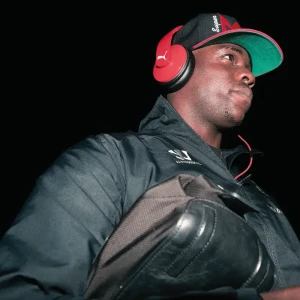Reduce pain. Faster injury recovery for footballers. How one clinic is pioneering Magnetic Resonance Therapy
At The Core clinic in Bath, using MRT to get injured football players back quicker.
Players get injured
Injury is something that footballers accept. They can be minor or major. Some, however, can lead to long-term issues. Professional athletes will most likely manage a persistent injury throughout their careers. Sometimes, this can last past when playing days are over. It’s then that a football injury becomes a chronic condition, affecting normal activity beyond a player’s career. At football4football, we help players from grassroots up to the International level. We hear repeated calls for guidance surrounding the treatment of injury.
 EXPECTED: Pro football means injury. With MRT, pain and timeout is being reduced
EXPECTED: Pro football means injury. With MRT, pain and timeout is being reduced
Why At The Core..
The research we do 1-to-1 with pro footballers, and with the experts that treat them, means we see innovative methods in the market. One such approach we got excited about came from a chat with Paul Tisdale. The respected football manager is an open thinker on the pitch and applies the same off it. Being a former pro, he understands the physical demands football can have on a player. With a wish to build a credible business, and with a preference to do it in the health industry, Tisdale made plans for a contemporary rehabilitation and fitness facility. At The Core was born.
 GAFFER: Paul Tisdale developed At The Core to run alongside his football managerial career
GAFFER: Paul Tisdale developed At The Core to run alongside his football managerial career
Football manager
At The Core is a cutting edge physiotherapy clinic in Bath, rich in an elite level background. With Tisdale positioned within the game, he’d deliver the requisite player connections, but an injury expert was called for. Enter, Adey Saunderson. He’s worked in the top flight of rugby and football for many seasons. As a trusted physiotherapist and colleague of Tisdale at Exeter City, he was the obvious choice as partner.
Football manager and football physio open a clinic for footballers - sounds credible. But the duo preferred to sidestep the obvious clichés. Their personal goal was to add value and create a USP. This led them to MRT [Magnetic Resonance Therapy]. MRT has similar principles to MRI [Magnetic Resonance Imaginary] the procedure used to scan football players.
 EXPERIENCE: At The Core partner & physio, Adey Saunderson, rehabs a player
EXPERIENCE: At The Core partner & physio, Adey Saunderson, rehabs a player
MRT & MRI
By lessening the intensity of the magnetic waves compared to an MRI, MRT focuses on stimulating cellular activity in order to aid in the healing process of a specific tissue.
Damaged tissue [muscles, ligaments, tendons, cartilage and bone] are all susceptible to injury for football players, commonly suffering injury to vulnerable joints such as the knee or ankle with potential damage to articular cartilage lasting beyond their playing career.
When any of these arise, painful movement caused by damage, bruising and swelling requires a period of recovery, removing them from selection and can sometimes cause long-term pain and inflammation, limiting performance. Tissue healing starts almost instantly with a biological cascade with 4 well established phases; bleeding, inflammation, proliferation and remodelling. MRT seeks to support and promote the normal healing process in acute soft tissue and bone injuries.
INNOVATION: Magnetic Resonance Therapy is gaining fans because of its effect & ease of use

MRT benefits
Sometimes, for a multitude of factors, injuries can heal poorly and can lead to long-lasting pain and chronic inflammation. When MRT is used for chronic injury, it has potential to reduce pain, inflammation and encourage cellular proliferation, encouraging healing of the affected area of a football injury.
Anti-inflammatory medicines, numbing gels and even cortisone injections have been options for footballers to play through pain, with cortisone injections having potentially negative effects on articular cartilage within the joints.
Results of MRT have no potential negative side effects, like some of these interventions. Where surgery isn’t needed, like a pulled hamstring, patients have witnessed reduced times on the sidelines using the At The Core clinic MRT procedure.
 PROOF: Pro player Ed Upson used At The Core for MRT to speed up his return to play after injury
PROOF: Pro player Ed Upson used At The Core for MRT to speed up his return to play after injury
Return quicker
In the professional game, 24 hours is an eternity. There is a cost to each day lost to injury. Having players available for selection is one of the biggest factors contributing to a squad's potential success. Every match matters. An initial diagnosis of injury predicts a ‘return to play’. Finding a treatment that can shorten the time a 1st-teamer is unavailable could be significant to the club’s season. For the player, time not being selectable has implications relating to pitch time in the form of momentum, appearance bonuses, and contract offers. Sports science is always advancing the potentiality of injury prevention in football.
 LEGEND: Magnetic Resonance Therapy is helping Steve Perryman after a 20 year plus career
LEGEND: Magnetic Resonance Therapy is helping Steve Perryman after a 20 year plus career
Post playing
As the sport gets quicker and physical outputs higher, injury management is more paramount. MRT is breaking ground in this field with At The Core establishing itself as the go to destination for players seeking non-invasive methods for injury. Because it runs alongside normal player rehab at their clubs, the treatment is proving a logical option for the pros. Benefits of Magnetic Resonance Treatment on football ravaged joints are now also being experienced by former players. At The Core, built by football people supports football people at all levels and stages of their careers.












